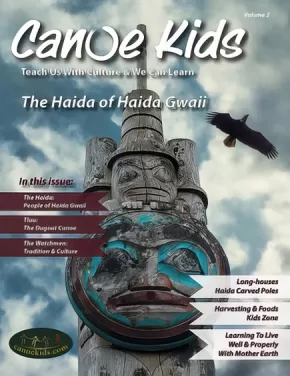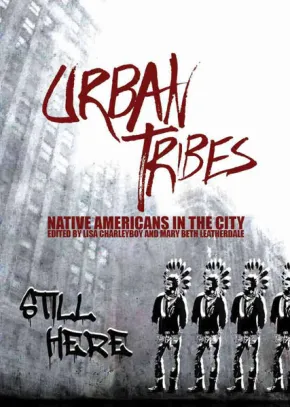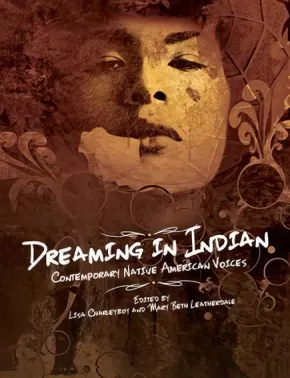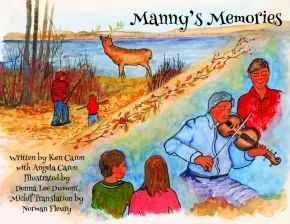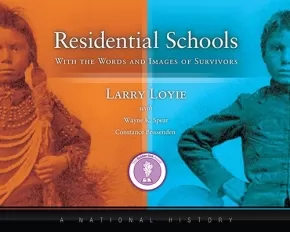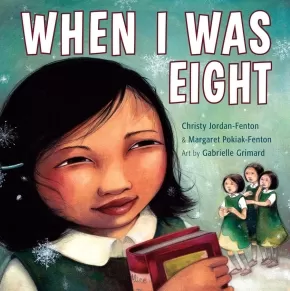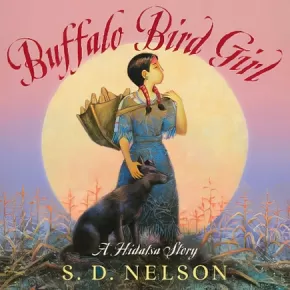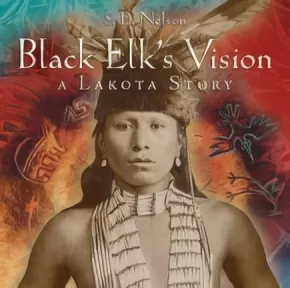
Biographies
121
-
135
of
145 Results;
Sort By
Go To
of 10
Canoe Kids Volume 2: The Haida of Haida Gwaii
$22.95
Format:
Paperback
Text Content Territories:
Indigenous Canadian; First Nations; Haida;
ISBN / Barcode: 9781926852089
Synopsis:
Synopsis:
Canoe Kids Vol. 2 The Haida is the second issue of a 24 edition series designed as family books for kids all ages. This eight-year project will see the Canoe Kids Team embed with 24 Peoples the publication designed as a family book for kids all ages. The mandate for the full-colour book (197 full colour high res photographs) is Exploring Indigenous Cultures through Authentic Indigenous Voices. The publication balances culture, equity and the environment in a beautiful mix that reminds the reader of the pictorial quality of National Geographic with a more in depth editorial content.
This second issue focuses on the Haida Nation of Haida Gwaii. In 165 pages the reader is introduced to the Haida People who kindly assisted the Canoe Kids staff by allowing access to Haida territory. Canoe Kids acknowledges the generosity of the Council of Haida Nation, the Haida Museum and the Haida Heritage Centre.
Educator Information
Each edition follows a common theme and features:
1: Compelling and beautiful pictorials that draw you into the stories and place of the featured community
2: The story of the vessel used by the featured Peoples
3: Art and Food
4: A Kids Zone
5: Resources for kids, parents and educators
6: Stories by and of the featured Peoples in each edition
7: Extraordinary pictures of the lives, land and waters of the featured Peoples
The materials are equal parts cultural and environmental. The latter is a natural offshoot of the former as Indigenous cultures are wrapped around and through the lands and water and sky both spiritually and from a harvesting and gathering perspective. Indigenous Peoples have long been the caretakers of Mother Earth and we can all learn from these experts whose message is perhaps more relevant today than ever.
Indigenous communities have always included the little ones in their circles and talk and teach to them in the same way they talk and teach to young adults and adults. Canoe Kids decided to follow that inclusive way of life for the layout of each book. Rather than create editions for different age groups, Canoe Kids decided to have one book for all ages.
K through 3 use Canoe Kids to read beautiful and ancient stories. There is beautiful original art to explore and a Kids Zone with puzzles, word searches, colouring, cutouts and more. Mid grades use the materials to study the culture, food and wildlife of the featured cultures. Grades 8 through 12 use stories that are more in depth from Dr. David Suzuki about the environment and there are discussion articles about living well and properly with Mother Nature as well as articles about the history and geography of the featured People.
Additional Information
165 pages | 8.50" x 11.00"
Gaawin Gindaaswin Ndaawsii / I Am Not A Number
$14.95
Artists:
Format:
Paperback
Text Content Territories:
Indigenous Canadian; First Nations; Anishinaabeg; Ojibway;
ISBN / Barcode: 9781772600995
Synopsis:
Synopsis:
Dual language edition of powerful children's book about residential school experience reflects Indigenous language revitalization.
The dual language edition, in Nishnaabemwin (Ojibwe) Nbisiing dialect and English, of the award-winning I Am Not a Number. When eight-year-old Irene is removed from her First Nations family to live in a residential school she is confused, frightened, and terribly homesick. She tries to remember who she is and where she came from, despite the efforts of the nuns who are in charge at the school and who tell her that she is not to use her own name but instead use the number they have assigned to her. When she goes home for summer holidays, Irene's parents decide never to send her and her brothers away again. But where will they hide? And what will happen when her parents disobey the law? Based on the life of co-author Jenny Kay Dupuis’ grandmother, I Am Not a Number is a hugely necessary book that brings a terrible part of Canada’s history to light in a way that children can learn from and relate to.
Reviews
"Residential and boarding school stories are hard to read, but they're vitally important... books like I Am Not a Number should be taught in schools in Canada, and the U.S., too."— Debbie Reese, American Indians in Children's Literature
"It’s important to teach children about true Canadian history, but it’s not easy to talk about it in a way that children will understand. I Am Not a Number is perfect to get the conversation about residential schools started with your children. It opens the door for them to ask questions about the subject and the story is relatable in a way they can follow."— Residential School Magazine
Educator Information
Recommended Ages: 7-11
Guided Reading: V
Dual-language: Nishnaabemwin (Ojibwe) Nbisiing dialect and English.
Subjects: Character Education (Empathy, Prejudice & Tolerance); History & Social Studies (Canadian History, First Nations & Indigenous Peoples); Government & Citizenship; Reflecting Diversity
This resource is also available in English: I Am Not a Number.
This resource is also available in French: Je ne suis pas un numero.
Additional Information
44 pages | 8.50" x 11.00" | Translated by Muriel Sawyer and Geraldine McLeod with contributions by Tory Fisher
I Am Not a Number
$19.95
Artists:
Format:
Hardcover
Text Content Territories:
Indigenous Canadian; First Nations; Anishinaabeg; Ojibway;
ISBN / Barcode: 9781927583944
Synopsis:
Synopsis:
When eight-year-old Irene is removed from her First Nations family to live in a residential school she is confused, frightened, and terribly homesick. She tries to remember who she is and where she came from, despite the efforts of the nuns who are in charge at the school and who tell her that she is not to use her own name but instead use the number they have assigned to her. When she goes home for summer holidays, Irene's parents decide never to send her and her brothers away again. But where will they hide? And what will happen when her parents disobey the law? Based on the life of co-author Jenny Kay Dupuis’ grandmother, I Am Not a Number is a hugely necessary book that brings a terrible part of Canada’s history to light in a way that children can learn from and relate to.
Awards
- 2018 Red Cedar Award for Information Book Winner
- 2018 Hackmatack Award Winner
Reviews
"Residential and boarding school stories are hard to read, but they're vitally important... books like I Am Not a Number should be taught in schools in Canada, and the U.S., too."— Debbie Reese, American Indians in Children's Literature
"It’s important to teach children about true Canadian history, but it’s not easy to talk about it in a way that children will understand. I Am Not a Number is perfect to get the conversation about residential schools started with your children. It opens the door for them to ask questions about the subject and the story is relatable in a way they can follow."— Residential School Magazine
"[A] powerful teaching tool that brings a terrible part of Canada’s history to light in a way that children can learn from and relate to. It is written in simple language and told in a way that will stimulate conversations about residential schools and the traumatic effects they have had on generations of First Nation families and communities. ... beautifully illustrated by Gillian Newland. She captures the somber mood of the school, the anguish of the children, the severity of the nuns and the desperation of the family. Students can easily empathize with Irene and her brothers as well as their parents as they try to imagine how they would feel or act in a similar situation." — Alberta Native News, December 2016
"Endless cross-curricular connections can be made using this story. But the most powerful aspect of this book is that it will open a dialogue, one that Justice Murray Sinclair spoke of as head of the Truth and Reconciliation Commission, a dialogue that needs to take place for reconciliation to happen." — ETFO Voice
Educator Information
Recommended Ages: 7-11
Guided Reading: V
This resource is also available in a dual-language format (English and Nishnaabemwin (Ojibwe) Nbisiing dialect): Gaawin Gindaaswin Ndaawsii / I Am Not A Number.
This resource is also available in French: Je ne suis pas un numero
Additional Information
32 pages | 8.50" x 11.00"
Urban Tribes: Native Americans in the City
$14.95
Editors:
Format:
Paperback
Text Content Territories:
Indigenous Canadian; Indigenous American;
ISBN / Barcode: 9781554517503
Synopsis:
Synopsis:
The majority of Natives in North America live "off the rez." How do they stay rooted to their culture? How do they connect with their community?
Urban Tribes offers unique insight into this growing and often misperceived group. This anthology profiles young urban Natives and how they connect with Native culture and values in their contemporary lives.
Their stories are as diverse as they are. From a young Dene woman pursuing an MBA at Stanford University to a Pima photographer in Phoenix to a Mohawk actress in New York City, these urban Natives share their unique insight to bridge the divide between their past and their future, their cultural home, and their adopted cities.
Unflinchingly honest and deeply moving, the contributors explore a wide range of topics: from the trials and tribulations of dating in the city to the alienating experience of leaving a remote reserve to attend high school in the city, from the mainstream success of the Electric Pow Wow music genre to the humiliation of racist school mascots.
Each of the personal perspectives helps to illuminate larger political issues. An innovative and highly visual design offers a dynamic reading experience.
Educator Information
Recommended Ages: 11 - 18.
Recommended Authentic First Peoples resource.
Recommended English First Peoples resource.
Additional Information
136 pages | 6.75" x 9.50" | colour illustrations and photographs, foreward, introduction, bibliography
Wisdom from our First Nations
$10.95
Format:
Paperback
Text Content Territories:
Indigenous American; Indigenous Canadian;
ISBN / Barcode: 9781927583555
Synopsis:
Synopsis:
In Indigenous cultures, elders serve as a bridge across time: they are connected to the past, they live in the present and they offer wisdom for the future. In these fascinating biographical essays, twelve First Nation and Native American elders share stories from their lives and tell what it was like to live in a time before television, cell phones and video games. Their stories explain how their humble childhoods shaped the adults they became and the lessons they share as elders. All the elders profiled work to ensure that their Native culture is passed down to members of their tribe. Settle in with this book and “listen” to the stories of these elders’ lives. As you take in their history, you just might gain wisdom that could make a difference in your own life.
Educator & Series Information
This book is part of the First Nations Series for Young Readers. Each book is a collection of biographies of First Nations, Métis, and Inuit women and men who are leaders in their fields of work, in their art, and in their communities.
For ages 9-14.
Additional Information
128 pages | 6.00" x 9.00"
Dreaming in Indian: Contemporary Native American Voices
$19.95
Artists:
Editors:
Format:
Hardcover
Text Content Territories:
Indigenous American; Indigenous Canadian;
ISBN / Barcode: 9781554516872
Synopsis:
Synopsis:
A powerful and visually stunning anthology from some of the most groundbreaking Native artists working in North America today.
Truly universal in its themes, Dreaming In Indian will shatter commonly held stereotypes and challenge readers to rethink their own place in the world. Divided into four sections, ‘Roots,’ ‘Battles,’ ‘Medicines,’ and ‘Dreamcatchers,’ this book offers readers a unique insight into a community often misunderstood and misrepresented by the mainstream media.
Emerging and established Native artists, including acclaimed author Joseph Boyden, renowned visual artist Bunky Echo Hawk, and stand-up comedian Ryan McMahon, contribute thoughtful and heartfelt pieces on their experiences growing up Indigenous, expressing them through such mediums as art, food, the written word, sport, dance, and fashion. Renowned chef Aaron Bear Robe, for example, explains how he introduces restaurant customers to his culture by reinventing traditional dishes. And in a dramatic photo spread, model Ashley Callingbull and photographer Thosh Collins reappropriate the trend of wearing ‘Native’ clothing.
Whether addressing the effects of residential schools, calling out bullies through personal manifestos, or simply citing hopes for the future, Dreaming In Indian refuses to shy away from difficult topics. Insightful, thought-provoking, and beautifully honest, this book will to appeal to young adult readers. An innovative and captivating design enhances each contribution and makes for a truly unique reading experience.
Reviews
“It’s hard to imagine a middle- or high-school classroom that wouldn’t benefit from having this.” —Booklist, 02/15
“Belongs in every middle school, high school and public library.” —CM Reviews, 05/22/15
"For some time now, I've been waiting for Dreaming in Indian: Contemporary Native American Voices... It was getting buzz in Native networks on social media. I've read it, now, and highly recommend it... Dreaming in Indian has a vibrancy I've not seen in anything else. A vibrancy that, perhaps, is characteristic of a generation at ease with technology and its tools... I want to pore over the art, studying it, thinking about it, marveling at it. I can imagine a lot of people dismissing this work because it doesn't conform to their stereotypical ideas of dead or stoic Indians. But I can also imagine a lot of others holding it dear because it reflects who we are... You'll also have a solid introduction to the artists and writers, their lives, what drives them... Gritty and real, their live stories are inspiring... There's a lot to ponder in Dreaming In Indian. It'll challenge readers, in good ways, and that is a good thing. Check it out." — Debbie Reese, American Indians in Children's Literature, September 2014
Educator Information
Recommended Ages: 11-18
Themes: First Nations; native peoples; Indigenous; biography; multicultural; stereotyping; acceptance; community; prejudice; self-esteem; tolerance.
Fountas & Pinnell Reading Level: Z+
Authentic First Peoples resource K-9.
Recommended English First Peoples resource.
Additional Information
128 pages | 8.50" x 11.00" | full-color illustrations and photographs throughout, foreword, introduction
Manny's Memories
$17.50
Artists:
Format:
Paperback
Text Content Territories:
Indigenous Canadian; Métis;
ISBN / Barcode: 9781926795164
Synopsis:
Synopsis:
Manny's Memories, by Author Ken Caron with his daughter Angela Caron, introduces us to the Métis community of Round Prairie, Saskatchewan through the eyes of a young boy growing up in the 1940s. Manny shares his boyhood memories of the once vibrant community not too far from Saskatoon's city limits. Though rural life at the time called for hard work, self-sufficiency, and generosity, there was always time to have fun and to enjoy being a young Métis boy. Artist Donna Lee Dumont's visual expression of Manny's Memories helps us see the world as Ken, called "Manny" in his youth, remembers it. Norman Fleury's accompanying Michif translation and narration returns to the language which Manny often hears as a boy. Manny's Memories leaves us with a rare and satisfying glimpse of life not so long ago.
Educator Information
Grade Level: Primary
Format: Book/CD, English/Michif-Cree
Additional Information
36 pages | 10.94" x 8.46"
Residential Schools, With the Words and Images of Survivors
$34.95
Format:
Hardcover
Text Content Territories:
Indigenous Canadian;
ISBN / Barcode: 9780993937101
Synopsis:
Synopsis:
Residential Schools, With the Words and Images of Survivors, A National History honours the survivors, the former students, who attended residential schools. Designed for the general reader this accessible, 112-page history offers a first-person perspective of the residential school system in Canada, as it shares the memories of more than 70 survivors from across Canada as well as 125 archival and contemporary images (65 black & white photographs, 51 colour, some never before published).
This essential volume written by award-winning author Larry Loyie (Cree), a survivor of St. Bernard Mission residential school in Grouard, AB, and co-authored by Constance Brissenden and Wayne K. Spear (Mohawk), reflects the ongoing commitment of this team to express the truths about residential school experiences and to honour the survivors whose voices are shared in this book.
Along with the voices, readers will be engaged by the evocative, archival photographs provided by the Shingwauk Residential Schools Centre with the assistance of curator Krista McCracken. The book begins with the moving introduction by Larry Loyie, and moves to seven chapters that explore the purpose of this school system; cultures and traditions; leaving home; life at school the half-day system; the dark side of the schools; friendship and laughter coping with a new life; changing world–the healing begins; and an afterword. A detailed, full colour map showing residential schools, timeline with key dates, glossary, and a helpful index (including names of survivors and schools) make this vital resource a must-have for secondary, college, and universities, libraries, and the general reader.
Reviews
"A broad and comprehensive review of the history of First Nations, Métis, and Inuit peoples in Canada told from the perspective of First Peoples in a very accessible way. Any educator, regardless of personal background or heritage, would find this timely resource very useful in any classroom." — Gary Fenn and Domenic Bellissimo, executive assistants, Ontario Secondary School Teachers’ Federation
"Written with a gentle hand, this book describes a history that few Canadians understand or even know about. From the first page, those in search of the truth are engaged in a journey of learning, as they come to understand the true battle of Aboriginal peoples to preserve their cultures and pride. This story is a true account of resiliency and human spirit." — Tracy Zweifel, executive director, Sagitawa Friendship Society, Alberta
Awards
- 2016 Winner of Golden Oak award in Ontario's Forest of Reading program
Educator Information
This must-have resource includes a detailed, full-colour map showing residential schools, a timeline with key dates, and a glossary.
Recommended for grades 7-12, but would still be useful for adults and college/university courses studying residential schools and Indigenous history.
This book has been evaluated and approved by ERAC (Educational Resource Acquisition Consortium, British Columbia).
Additional Information
112 pages | 10.43" x 8.26"
When I Was Eight
$9.95
Artists:
Format:
Paperback
Text Content Territories:
Indigenous Canadian; Inuit; Inuvialuit (Mackenzie Inuit);
ISBN / Barcode: 9781554514908
Synopsis:
Synopsis:
Nothing will stop a strong-minded young Inuit girl from learning how to read.
Olemaun is eight and knows a lot of things. But she does not know how to read. She must travel to the outsiders' school to learn, ignoring her father's warning of what will happen there.
The nuns at the school take her Inuit name and call her Margaret. They cut off her long hair and force her to do chores. She has only one thing left -- a book about a girl named Alice, who falls down a rabbit hole.
Margaret's tenacious character draws the attention of a black-cloaked nun who tries to break her spirit at every turn. But she is more determined than ever to read.
By the end, Margaret knows that, like Alice, she has traveled to a faraway land and stood against a tyrant, proving herself to be brave and clever.
Based on the true story of Margaret Pokiak-Fenton, and complemented by stunning illustrations, When I Was Eight makes the bestselling Fatty Legs accessible to young children. Now they, too, can meet this remarkable girl who reminds us what power we hold when we can read.
Reviews
"A searing account of assimilation policies and a celebration of the human spirit In this picture-book memoir, an Inuit recollects how she begged her father to attend the church-run Indian residential school so she could fulfill her cherished dream to learn to read... What she discovers is the school is draconian... Olemaun describes how a nun cuts her braid, changes her name, and assigns an endless list of chores... Even as she labors, Olemaun finds strength in memories of her father's love and uses every opportunity to study the alphabet and sound out words. Effective shadow-ridden illustrations capture the pervasive atmosphere of abuse, but the final picture speaks volumes about Olemaun's determination and triumph: her face appears as large and shining as the sun emerging from darkness, because she has taught herself to read... A searing account of assimilation policies and a celebration of the human spirit." — Jeanne McDermott, Booklist, April 2013
"Pokiak-Fenton's true story of her experiences at residential school, was originally told in Fatty Legs.... When I Was Eight is an even more powerful read due to its emphasis on concise, affective text coupled with Gabrielle Grimard's quietly unpretentious artwork." — Canlit for Little Canadians
"When I Was Eight is a powerful story based on the true story of Margaret Pokiak-Fenton... It is a story of a young Inuit girl who goes to a residential school and suffers terrible abuse from the nuns at the school... Through all these trials, she perseveres in trying to learn to read. One day in class she is finally able to stand up to the teacher and show her own strength by reading aloud. It is a moment of victory! Although this story may be intended for younger students who are studying the Inuit, it could also be used in upper grades when discussing social justice issues. The story ties in with anti-bullying themes as well... Highly recommended." — Lori Austin, Resource Links, Vol. 18, No. 5, May 2013
"This excellent picture book, written as a companion to the longer version of it called Fatty Legs, is a powerful way to introduce the residential school experience to younger readers." — Sally Bender, Sal's Fiction Addiction, February 2014
Educator Information
Recommended Ages: 6-9.
Authentic First Peoples Resource K-9.
Grades 10-11 English First Peoples resource for the unit First Steps - Exploring Residential School and Reconciliation through Children's Literature.
This resource is also available in French: Quand j'avais huit ans
Additional Information
32 pages | 9.00" x 9.00" | Colour illustrations throughout.
Buffalo Bird Girl: A Hidatsa Story
$28.99
Artists:
Format:
Hardcover
Text Content Territories:
Indigenous American; Native American; Three Affiliated Tribes; Hidatsa;
ISBN / Barcode: 9781419703553
Synopsis:
Synopsis:
"I was born in an earth lodge by the mouth of the Knife River, in what is now North Dakota, three years after the smallpox winter." - Buffalo Bird Woman
Born in the 1830s, Buffalo Bird Girl was a member of the Hidatsa people, a Native American community that lived in permanent villages along the Missouri River on the Great Plains. Like other girls her age, Buffalo Bird Girl learned the ways of her people through watching, listening and then doing. She helped plant crops in the spring, tended the fields through the summer - scaring off birds and other animals, as well as hungry boys! - and in autumn joined in the harvest. She also learned to prepare animal skins, dry meat and perform other household duties. Along with her chores, however, there was time for playing games with friends or training her dog. Her family also visited the nearby trading post, where all sorts of magnificent things from the white man's settlements in the East could be seen.
Interweaving the actual words and stories of Buffalo Bird Woman with his artwork and archival photographs, award-winning author and artist S.D. Nelson has woven a poignant yet vibrant story, beautifully capturing the spirit of Buffalo Bird Girl and her lost way of life. The book includes a historical timeline.
Reviews
"The extraordinary illustration of this handsome volume begins with the endpaper maps and features acrylic paintings of the Hidatsa world reminiscent of traditional Plains Indian art. Pencil drawings and relevant, carefully labeled photographs round out the exquisite design. All the artwork both supports and adds to the text. An extensive author’s note and timeline supplement this beautiful tribute." —Kirkus Reviews, starred review
"Nelson's quiet, respectful tone capably balances the factual details of daily life in the Hidatsa tribe with the obvious joy and nostalgia Buffalo Bird Girl feels toward her childhood." —The Bulletin of the Center for Children's Books
"As a writer, storyteller, and traditional artist of the Sioux people, his perspective is genuine and effectively portrayed. This book would be enjoyable for anyone interested in history, but would also be an effective resource in the classroom to support the curriculum.”—Library Media Connection
"Nelson's acrylic paintings and b&w pencil drawings are intriguingly interlaced with the photographs, contrasting Native American figures in blunt profile with harvest colors and background textures that mimic dried spears of grass, leather skins, and basket weaves." — Publishers Weekly"
Educator Information
This fascinating picture book biography tells the childhood story of Buffalo Bird Woman. Through her true story, readers will learn what it was like to be part of this Native American community that lived along the Missouri River in the Dakotas, a society that depended more on agriculture for food and survival than on hunting. Children will relate to Buffalo Bird Girl’s routine of chores and playing with friends, and they will also be captivated by her lifestyle and the dangers that came with it.
Recommended Ages: 6-10
Additional Information
56 pages | 10.50" x 10.25"
Great Writers from our First Nations
$10.95
Format:
Paperback
Text Content Territories:
Indigenous American; Indigenous Canadian;
ISBN / Barcode: 9781926920856
Synopsis:
Synopsis:
A celebration of ten writers who have challenged stereotypes, told history from a perspective often silenced, and entertained millions of readers.
Included is author Louise Erdrich, whose novel Love Medicine was the first in an award-winning series about the lives of several generations of Ojibwa families. Sherman Alexie, author of the semi-autobiographical The Absolutely True Diary of a Part-Time Indian, went on to win the National Book Award. Tomson Highway broke new ground with his play The Rez Sisters. Joseph Boyden based his novel Three Day Road in part on his grandfather’s experience fighting in the First World War. N. Scott Momaday re-wrote the history of the American West with his book House Made of Dawn. Nicola Campbell drew on her family’s experience of residential schools to write the children’s books Shi-shi-etko and Shin-chi’s Canoe. Also included are Marilyn Dumont (A Really Good Brown Girl), Tim Tingle (Walking the Choctaw Road), Joseph Bruchac (Buffalo Song), and Maria Campbell (Half-breed).
The full list of writers profiled:
• Sherman Alexie (Spokane/Coeur d’Alene, Washington) - The Absolutely True Diary of a Part-Time Indian
• Louise Erdrich (Ojibwa, North Dakota) - Love Medicine (the Argus Series)
• Joseph Boyden (Cree/Métis, Ontario) - Three Day Road
• N. Scott Momaday (Kiowa/Cherokee, Oklahoma) - House Made of Dawn
• Marilyn Dumont (Cree/Métis, Alberta) - A Really Good Brown Girl
• Tomson Highway (Cree, Manitoba) - The Rez Sisters
• Joseph Bruchac (Abenaki, New York State) - Buffalo Song
• Maria Campbell (Métis, Saskatchewan) - Halfbreed
• Nicola Campbell (Interior Salish/Métis, Alberta) - Shin-chi’s Canoe
• Tim Tingle (Choctaw, Texas) - Walking the Choctaw Road
Educator & Series Information
This book is part of the First Nations Series for Young Readers. Each book is a collection of biographies of First Nations, Métis, and Inuit women and men who are leaders in their fields of work, in their art, and in their communities.
For ages 9-14.
Additional Information
128 pages | 6.00" x 9.00"
A Stranger at Home: A True Story
$12.95
Editors:
Format:
Paperback
Text Content Territories:
Indigenous Canadian; Inuit; Inuvialuit (Mackenzie Inuit);
ISBN / Barcode: 9781554513611
Synopsis:
Synopsis:
The powerful memoir of an Inuvialuit girl searching for her true self when she returns from residential school.
Traveling to be reunited with her family in the Arctic, 10-year-old Margaret Pokiak can hardly contain her excitement. It's been two years since her parents delivered her to the school run by the dark-cloaked nuns and brothers.
Coming ashore, Margaret spots her family, but her mother barely recognizes her, screaming, "Not my girl." Margaret realizes she is now marked as an outsider.
And Margaret is an outsider: she has forgotten the language and stories of her people, and she can't even stomach the food her mother prepares.
However, Margaret gradually relearns her language and her family's way of living. Along the way, she discovers how important it is to remain true to the ways of her people -- and to herself.
Highlighted by archival photos and striking artwork, this first-person account of a young girl's struggle to find her place will inspire young readers to ask what it means to belong.
Sequel to Fatty Legs.
Reviews
"This memoir, detailing a woeful piece of Canadian history and demonstrating Margaret's strength of character, compassion, courage and her willingness to sacrifice herself for her family's sake, gives the reader a lot to ponder. Highly recommended." — Shelbey Krahn, Canadian Materials, February 2012
"A Stranger at Home will speak to anyone who has experienced displacement or assimilation into a new culture. This fabulous story enhances the Grades 6 to 8 social studies curriculum." — Professionally Speaking (Ontario College of Teache, April 2012
"While it may not have the same drama and tension of the first memoir, this tale provides a compelling and moving story of a girl searching for the strength to find her place in the world." — Jody Kopple, School Library Journal, December 2011
"Without being graphic or overwhelming, the Fentons recreate a tragic moment in Canadian history through the innocent reflections of a child...a must for any classroom library." — Canadian Teacher Magazine, May 2012
"This tale provides a compelling and moving story of a girl searching for the strength to find her place in the world. The writing is unpretentious and accessible and readers who enjoyed the first book will find this an interesting follow-up. Vivid paintings are a beautiful accompaniment to the storytelling. Photographs from Pokiak Fenton's own collection add important points of reference for readers looking to visualize the characters and the unique setting of the Arctic Circle. A welcome addition to biography collections." — Jody Kopple, School Library Journal, December 2011
Educator Information
Recommended Ages: 9-13.
Guided Reading Level: Fountas and Pinnell U
Themes: biography; Inuit; Indigenous peoples; arctic; residential schools; identity; community; Canadian content; family; society; history; memoir.
This resource is also available in French: Étrangère chez moi
Additional Information
128 pages | 6.25" x 9.00"
Environmentalists from our First Nations
$10.95
Format:
Paperback
Text Content Territories:
Indigenous American; Indigenous Canadian;
ISBN / Barcode: 9781897187982
Synopsis:
Synopsis:
Like the other books in the First Nations Series for Young Readers, this book offers ten short and engaging biographies of First Nations/Native activists who advocate not only for the environment but for Native rights. Their stories are full of highs and lows, triumphs and setbacks. Environmental trailblazers, these men and women are role models for children everywhere.
The men and women profiled here are united by their work to protect the environment and to support indigenous rights. Their stories take us from the Arctic National Wildlife Refuge in Alaska to the Black Mesa in Arizona.
Melina Laboucan-Massimo uses her passion to stop oil extraction in Alberta’s tar sands.
Winona LaDuke is a voice for reclaiming Native lands, advocating renewable energy resources, and protecting Native cultures.
Clayton Thomas-Muller is a dynamic advocate for indigenous self-determination and campaigner against tar sands extraction.
Ben Powless brings his youthful energy and skills to addressing climate change issues.
Tom Goldtooth protects sacred sites and organizes global direct-action campaigns for the environment.
Grace Thorpe is a grandmother who dedicated her retirement years to keeping Native reservations from becoming nuclear waste dumps.
Sarah James is a voice from northern Alaska defending the Porcupine caribou herd and the Arctic National Wildlife Refuge.
Enei Begaye & Evon Peter are married activists who work as a team on environmental issues and sustainable strategies for Native people.
Klee Benally uses the media to empower Native communities in their fight for environmental justice.
Teague Allston works to ensure a tribal voice is heard in Washington DC.
Reviews
"These short biographies of environmentalists are sure to engage a whole classroom of readers. From the focus on a particular environmental crisis, to a description of each person's native heritage, to the writing style and level, the stories are accessible to readers young and old." — Canadian Teacher Magazine, March 2012
Educator & Series Information
This book is part of the First Nations Series for Young Readers. Each book is a collection of biographies of First Nations, Métis, and Inuit women and men who are leaders in their fields of work, in their art, and in their communities. For ages 9-14.
Additional Information
128 pages | 6.00" x 9.00"
Black Elk's Vision: A Lakota Story
$27.95
Artists:
Format:
Hardcover
Text Content Territories:
Indigenous American; Native American; Sioux; Lakota; Oglala Lakota;
ISBN / Barcode: 9780810983991
Synopsis:
Synopsis:
Told from the Native American point of view, Black Elk’s Vision provides a unique perspective on American history. From recounting the visions Black Elk had as a young boy, to his involvement in the battles of Little Big Horn and Wounded Knee, as well as his journeys to New York City and Europe with Buffalo Bill’s Wild West Show, this biographical account of Black Elk—an Oglala-Lakota medicine man (1863–1950)—follows him from childhood through adulthood.
S. D. Nelson tells the story of Black Elk through the medicine man’s voice, bringing to life what it was like to be Native American in the mid-to-late nineteenth century and early twentieth century. The Native people found their land overrun by the Wha-shi-choos, or White Man, the buffalo slaughtered for sport and to purposely eliminate their main food source, and their people gathered onto reservations. Through it all, Black Elk clung to his childhood visions that planted the seeds to help his people—and all people—understand their place in the circle of life. The book includes archival images, a timeline, a bibliography, an index, and Nelson’s signature art.
Reviews
“A fine choice for story hours, this will also find wide curricular use.” —Booklist
“A modern-day story in the Sioux tradition of storytelling.” —Winston-Salem Journal
“Splendid acrylic artwork captures the action, humor, and spirit of the tale. A solid addition to collections of Native American tales and an enjoyable read-aloud.” —School Library Journal
“Nelson pulls it off with his confident style as a storyteller . . . polished illustrations . . . informative, well written.” —Kirkus Reviews
Educator Information
F&P level: U
F&P genre: B
Additional Information
48 pages | 10.50" x 10.37"
Great Musicians from our First Nations
$10.95
Format:
Paperback
Text Content Territories:
Indigenous American; Indigenous Canadian;
ISBN / Barcode: 9781897187760
Synopsis:
Synopsis:
Music is their passion. Follow the journeys of ten talented musicians from the Native community as they make their way to the top. All of them, whether their music is traditional drumming or mainstream rock, bring their own cultural traditions to their music.
Rising stars Shane Yellowbird and Crystal Shawanda are steeped in country music. The Blackfire band combines punk rock with Dine’ music, while Four Rivers Drum has been drumming at powwows for more than fourteen years. Leela Gilday is an award-winning folk artist and Michael Bucher's music protects sacred sites. Contrast classical guitarist Gabriel Ayala with rock guitarist Mato Nanji and learn about the talents of jazz vocalist Jamie Coon and Native American flutist Mary Youngblood.
Educator & Series Information
This book is part of the First Nations Series for Young Readers. Each book is a collection of biographies of First Nations, Métis, and Inuit women and men who are leaders in their fields of work, in their art, and in their communities.
For ages 9-14.
Additional Information
128 pages | 6.00" x 9.00"
Sort By
Go To
of 10

